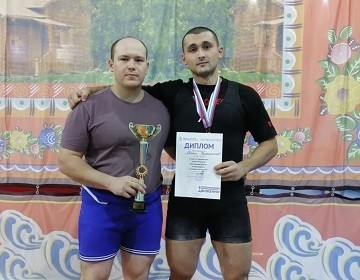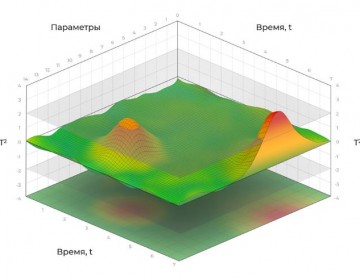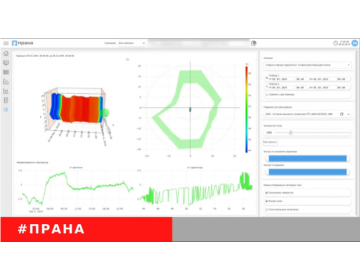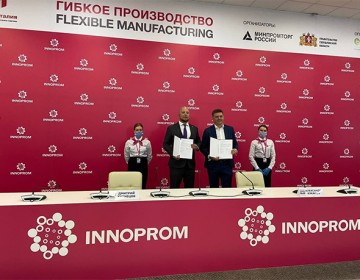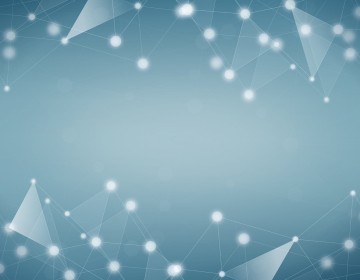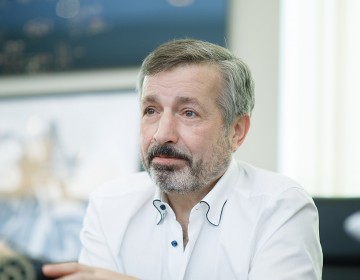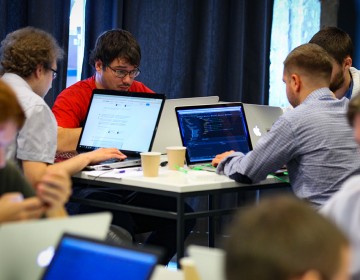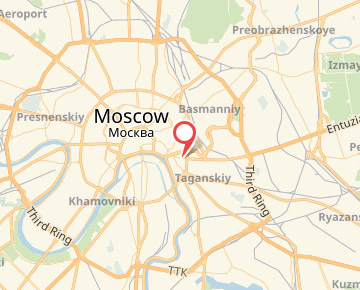What is the Internet of Things?
The Internet of Things (IoT) integrates devices into a computer network and allows them to collect, analyze, process and transmit data to other facilities via software, applications or technical devices
How does the Internet of Things work?
The Internet of Things, or IoT, is essentially a network of networks where people can communicate with devices and devices can communicate with each other, respond to changes in the environment and make decisions without human involvement.
IoT devices operate autonomously, although people can configure them or provide access to data. IoT systems operate in real time and usually consist of a network of smart devices and a cloud platform to which they are connected via Wi-Fi, Bluetooth or any other modes of communication.
What happens when the temperature gets too high or a burglar breaks into the home? The system warns the user about it or takes further actions automatically, for example, turns the air conditioner on or calls the police.
First, the devices collect data such as, for example, the temperature in the apartment or the user’s heartbeat; then, the data are sent to the cloud. There, the software processes the data; the Internet of Things is inextricably linked with Big Data, as noted by Alexander Surkov, IoT Development Manager at Yandex.Cloud, in the RBC Trends podcast.
What is the Internet of Things — in three minutes
What does the Internet of Things consist of?
In addition to Big Data, analytics, connections, devices and experience are also important to the operation of the Internet of Things. For the sake of simplicity, this principle is represented as ABCDE: Analytics, BigData, Connection, Devices, Experience.
- Analytics is a key element in the operation of the IoT, which integrates the devices and the data originating from them and optimizes the relevant business processes;
- BigData — that is, the information coming from devices — are stored in the cloud. They make it possible to automate existing processes or build new ones;
- Connection means the channels through which devices receive and transmit information;
- Devices means the system’s connected devices which, in order to function properly, must have a message frequency appropriate to their assigned tasks;
- Experience means working with the existing experience of customer solutions using IoT, its analytics and rethinking.
According to Fortune Business Insights, the global market of the Internet of Things in 2018 amounted to $160 bln, and its volume is expected to exceed $1.1 trln by 2026. Such rapid growth is due to the widespread distribution of artificial intelligence and machine learning systems. This market growth is also being driven by an increase in the number of users of smart devices, smartphones, as well as the rising demand for energy saving. According to GidMarket research company, the optimistic scenario for the evolution of the Russian IoT market indicates that its volume could exceed RUB 590 bln in 2020.
Where is the Internet of Things used?
The IoT allows companies to automate their processes and lower labor costs. This reduces the volume of waste, improves the quality of services provided, and makes production process and logistics cheaper.
“You could come across the IoT virtually anywhere: from contextual advertising telling the user where to have lunch or refuel, depending on their current geolocation, to food delivery or the purchase of a car,” Maxim Lipatov, Technical Director for the IoT-based PRANA predictive analytics system, told RBC Trends.
According to a study by IoT Analytics, the highest level of penetration of IoT technology in 2020 was detected in transport, energetics, retail, urban life management, healthcare and industry.
- In the power industry, the Internet of Things enhances the controllability of substations and power lines thanks to remote monitoring.
- In healthcare, the IoT makes it possible to achieve a new level of disease diagnostics, since smart devices monitor patient health metrics in the background.
- In agriculture, smart farms and greenhouses automatically dose out fertilizers and water while animal smart trackers notify farmers in a timely fashion not only of the location of their animals, but also of their health status by analyzing their heartbeat, body temperature and general activity.
- In transport, typical IoT solutions include telematics and the smart management of a fleet of vehicles, where the vehicles are connected to the local operating system for monitoring and diagnostics. According to Statista estimates, $740 bln will be invested in the development of the IoT for motor vehicles by 2025.
- In the urban environment, IoT solutions help automate lighting while reducing lighting costs by up to 30–50%. Smart meters that automatically record and transmit information on costs and wear-and-tear to management companies relieve city dwellers of the need to verify and send data on the power they consume.
- In logistics, the IoT reduces the cost of cargo transportation and minimizes the impact of the human factor. IoT systems can also monitor waste bin fill and optimize the cost of waste removal on the basis of these data.
- The Internet of Things is being extensively introduced by the oil & gas and mining industries. In particular, the application of advanced analytics for boreholes is helping the oil & gas industry ramp up its production in already depleted fields. For example, thanks to using the Internet of Things, Severstal was able to minimize the company’s losses stemming from faulty power-consumption forecasting.
- In retail, according to Maxim Lipatov, the IoT enables brands and sellers to optimize costs and improve customer experience due to digital signage, tracking customer communications, inventory management, and smart vending machines. According to , the market is expected to grow from $14.5 bln in 2020 to $35.5 bln by 2025.
Why is the IoT useful for humans?
For many people, the Internet of Things is associated with a smart home. Thanks to technologies and devices developed by Google, Yandex, Amazon, Apple and other companies, users can go online shopping, control the room temperature and turn the lights and music on by giving voice commands to virtual assistants.
You no longer need to worry that you forgot to turn the iron or tap off: just press the button on your smartphone and the smart home will fix everything. Or, you can avoid pressing the button, since your home is so smart that it will automatically put everything right and notify the owner of the result. The computer vision surveillance system will discern everyone who passes by your apartment and compare the images with the police database.
Today, a smart home in Russia is basically represented by intelligent assistant Alice by Yandex that turns the music on, searches for information on the Internet, recommends movies, adjusts the indoor lighting and temperature and turns the kettle on.
American company Qualcomm also offers a system that can make any home smarter. It allows you to remotely monitor the situation at home and informs you of any noise — by using it, you can give instructions to the robot vacuum cleaner and other connected devices, as well as open doors with the help of the face scanner
Does the Internet of Things have any drawbacks?
The major problem with the development of the IoT is associated with security. Cybercriminals are constantly trying to hack into patients’ remote monitoring devices, databases containing information about human health, intelligent vehicle control systems, carry out phishing attacks, upload viruses to hacked devices, and even commit acts of sabotage at factories. Therefore, participants in the IoT market have to learn how to protect their systems.
Another challenge for the Internet of Things is the possible incompatibility of software from different devices by different manufacturers integrated into a single system. Such a situation may occur when developers release a software update for their device and do not verify its compatibility with older software versions of other related devices. To troubleshoot the problem, it is necessary to contact other developers and ask them to make changes to their software for the entire IoT system to operate correctly.
Connecting an ever-increasing number of devices to the Internet will inevitably lead to job losses. For example, IoT systems will replace some specialists in the maintenance, repair and installation of equipment. Moreover, the legal aspects of introducing the Internet of Things are currently rather vague.
IoT introduction challenges
Maxim Lipatov divides the challenges of introducing the Internet of Things into technological and staffing:
1. Technological challenges are due to the fact that existing systems of maintenance, repair, supply and resource planning at enterprises do not provide for the introduction of new data collection tools;
2. Staffing challenges are related to personnel, when technicians can’t switch from manual information collection.
“The notion that the introduction of hype technologies like Big Data or Data Science will become a panacea for all woes is wrong,” notes Mr. Lipatov. “An organization has to start with rethinking its business processes and determining digitalization tools, and an expert examination is required for this purpose. Perhaps, IoT-based prognostics will emerge as the right solution. It could prevent the excessive consumption of resources and deviations in the technical condition of equipment, as well as extend its lifecycle. Taken together, this mitigates the risks of a sudden stop in production due to malfunctions and therefore excludes direct financial losses.”
As of today, prognostics is the latest stage in the evolution of the industrial Internet of Things. It implies not just collecting data from pieces of equipment, but a local system with a distributed network in which information from different sources is accumulated into the same storage, where it is processed and sent to the device maintenance staff.
Future of the Internet of Things
, there will be 55.7 bln connected devices worldwide by 2025. Cybercriminals will proceed with attacks against them, since the IoT system is a fast enough way to spread malware. Ordinary users, companies and entire cities will increasingly apply intelligent technologies to save their time and money. For example, refrigerators will be able to warn of imminent food spoilage, traffic lights with built-in video sensors will regulate road traffic depending on its intensity.
However, the current key problem associated with introducing the IoT is the lack of uniform standards. Therefore, the existing solutions are difficult to integrate with each other, while new ones are emerging more slowly than they otherwise could.
Another nuance is that things on the Internet of Things should be autonomous, i.e. be able to receive energy from the environment, without human involvement.
Source:
The PRANA Predictive Analytics and Remote Monitoring System has received another update of the operating system.
The industrial holding ROTEC JSC and Group-IB, one of the leading developers of solutions for detecting and preventing cyberattacks have entered into a cooperation agreement to ensure technological and cybersecurity of critical infrastructure facilities. The agreement was signed at the International Industrial Trade Fair Innoprom 2021 and will allow ACS and IS specialists of enterprises to observe and take proactive measures to prevent incidents caused both by service wear of equipment and as a result of cyberattacks.
The industrial Internet begins with the introduction of systems based on mutual penetration of information technologies and automation devices of manufacturing equipment, such as the systems of remote monitoring and diagnostics. One of the inspection methods of the equipment’s condition is its continuous monitoring, which is a necessary condition for the transition to a service system on the operating condition
According to Mikhail Lifshitz, Chairman of the Board of Directors of ROTEC, Russian power engineering company, the venture capital market in its present state is currently raising people whose aim is not to create a winning product, but just to raise funds. With regard to his business, Mr. Lifshitz abandoned the speculative component and headed for the long-term integration of ideas into production.
Despite the hazy weather and pouring rain, the yachtsmen were in a terrific mood! Three crews of racing yachts in Olympic Class SB20, mainly represented by employees of ROTEC, PRANA and TEEMP, took the whole winners podium in the amateur competition. For most of the participants, it was their first-ever experience of this kind – and they claimed victory straight away!
The trend towards digitalization and flourishing of the service economy have led to the emergence of a new model – Maintenance-as-a-Service. Let’s explore how it’s organized and the benefits that it offers to business.
The Internet of Things (IoT) integrates devices into a computer network and allows them to collect, analyze, process and transmit data to other facilities via software, applications or technical devices




